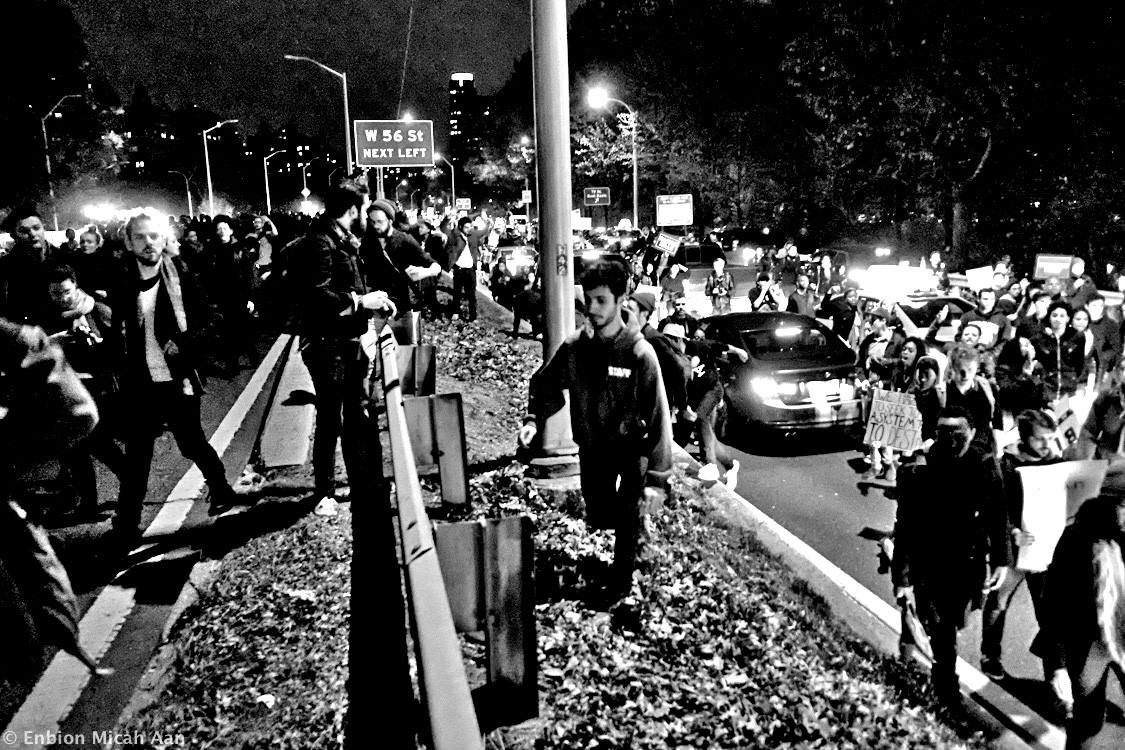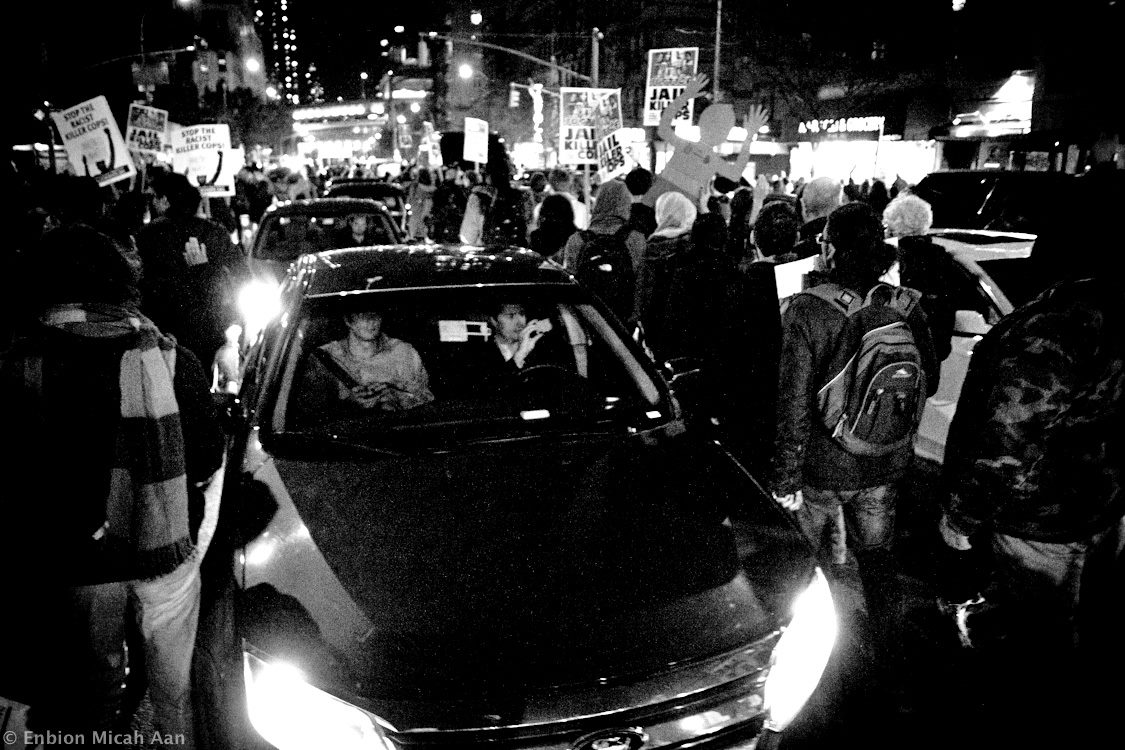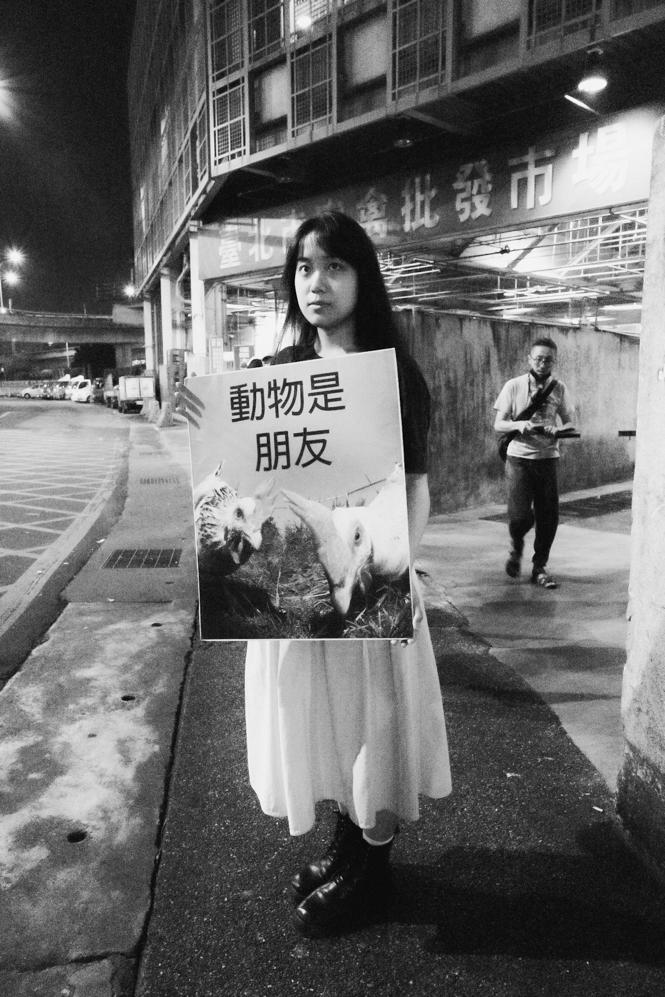by Enbion Micah Aan
語言:
English
Photo Credit: Enbion Micah Aan
BETWEEN 2021 AND 2023, Taipei Animal Save held two vigils in front of a Wanhua slaughterhouse – euphemistically and formally known as the Taipei Poultry Wholesale Market. In an Animal Save vigil, activists bear witness to the plight of animals and try to comfort animals on their way to being killed for meat. Typically, Save activists try to negotiate with slaughterhouse owners for permission, or they would take the opportunity to spend time with animals briefly when a truck is parked or stopped at traffic lights. In Taipei, however, industrial-scale slaughterhouses are unlikely to grant permission for activists to visit, and there are no safe locations where activists can interact with animals. Because of this lack of access, activists stationed themselves outside the slaughterhouse, watching the chickens tightly packed in cages from the gate. The vigils started in the late afternoon, but activists did not stay for the slaughter, which typically starts around midnight.
 Jia-Ling, a Vigil Participant in 2023. Photo credit: Enbion Micah Aan
Jia-Ling, a Vigil Participant in 2023. Photo credit: Enbion Micah Aan
The Animal Save Movement started in Toronto in 2015 when Anita Krajnc was walking her dog and encountered a truck carrying pigs. Having witnessed the plight of the pigs, Krajnc decided to regularly give water to pigs on the truck. Krajnk was subsequently charged with criminal mischief for this simple act of giving water to pigs–she was found not guilty by the court in 2017. The Toronto Pig Save was officially formed in 2010, and to date, there are about 1000 Animal Save groups worldwide.
Because of its core philosophy, the sensibility and outlook of the Animal Save Movement stand out from all the other animal rights and animal liberation movements. In the animal activist community, organizations and activists’ intellectual foundation tends to be that of utilitarianism, possibly because of the foundational text by Peter Singer. Possibly because of Singer’s utilitarian influence for the greatest good, many animal activists focus on proselytizing veganism to increase the number of vegans. In contrast, the intellectual backing of Save is Gandhi and Tolstoy, stressing nonviolent actions for social change and bearing witness as an act of transcendence. In other words, ahimsa and faith are at the very core of Save. This does not mean that Singer’s utilitarian outlook does not influence Save activists, but that the Animal Save Movement exhibits different sensibilities because of these non-Western influences.
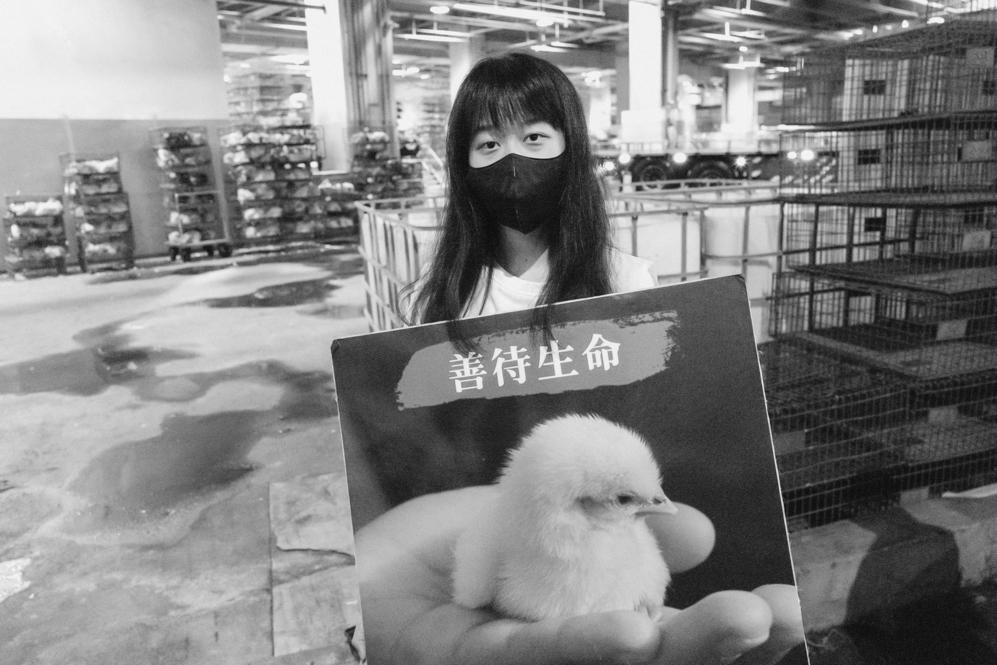 Eva in 2023. Photo credit: Enbion Micah Aan
Eva in 2023. Photo credit: Enbion Micah Aan
In terms of organizational tactics and structure, Save is also quite different. Unlike a traditional nonprofit organization, the Animal Save Movement’s organizational structure is a hybrid model: it is simultaneously a social movement and an organization. At the center, the organization sets up rules, such as a code of conduct and social media policies, and at the periphery, anyone who adheres to these rules can set up a chapter. The advantage of this structure allows Save to harness social energy, guiding it towards shared goals. For activists, Save’s policies provide a safe space and an established template to operate. There is, however, always dangers of disorganization, as exists in most social movements. So far, the Animal Save Movement has been able to navigate the role quite well, balancing the tension between the needs of formal organization and informal movement. The Animal Save Movement, however, is by no means the only organization with this hybrid model in the animal activist community – it is one of the only ones without overt controversies and conflicts.
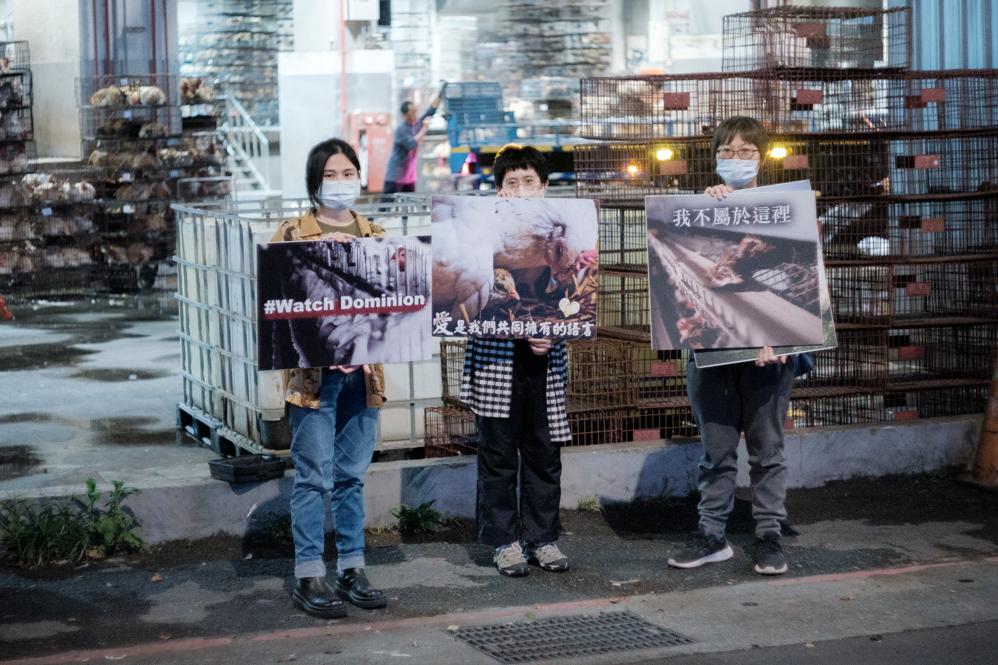 Animal Save Vigil in 2023. Photo credit: Enbion Micah Aan
Animal Save Vigil in 2023. Photo credit: Enbion Micah Aan
On June 19th, 2020, a truck driver ran over and killed a Save activist, Regan Russell. Russell was hit, run over, dragged, and her body was cut in half as a result. The driver was charged in 2021 with careless driving, a non-criminal charge, and pled guilty and was fined $2000 in 2023. In contrast, the charges Krajnc faced in 2015, for simply giving pigs water, were criminal and carried a sentence of up to 10 years. Given eyewitness accounts, it is quite clear that the driver was at least negligent if not murderous, but this act of killing was deemed non-criminal by investigators, not to mention that the police never released the video footage.
Blocking traffic is a common tactic in protests in North America. For example, the most well-known Occupy Wall Street action was the takeover of the Brooklyn Bridge. This is not to mention, with Black Lives Matter at its peak, blocking traffic and taking over roads was commonplace and almost expected in protests. It is hard to imagine that the killing of a demonstrator in such a manner does not cause widespread outrage, such as the case in Charlottesville, but the case of Russell, sadly, is only well-known within the animal activism community.
Black Lives Matters protests. Photo credit: Enbion Micah Aan
If anything, the relative obscurity of Regan Russell’s case proves that to be an animal activist, unfortunately, means to be ignored by society at large, so the question is, why do animal activists keep on going to these Animal Save vigils? Is there truth in Tolstoy’s insight: “When the suffering of another creature causes you to feel pain, do not submit to the initial desire to flee from the suffering one, but on the contrary, come closer, as close as you can to her who suffers, and try to help her.”? Why subject oneself to such a traumatic experience, to begin with? To find out, I spoke to a few activists as to why they would expose themselves to the experience.
For Lan, who has attended Save vigils on multiple occasions, going to vigils serves as a reminder as to why she went vegan, “In our daily lives, other than companion animals, we do not see animals. After having been a vegan for a while, the initial motivation to go vegan fades… Seeing these animals can help me strengthen my original intention.“ It is also important for Lan to bear witness since animal agriculture would like to hide the slaughtering of animals from the public, and she hopes that, by attending vigils, the workers and the passersby will have the opportunity to understand and perhaps change: “…Save vigils are peaceful. And because of this, if these vigils can be held regularly at the same location, people can be influenced…We stand here to remind them, to awaken their conscience, so they understand that even though this is legal, it does not mean it is right…”
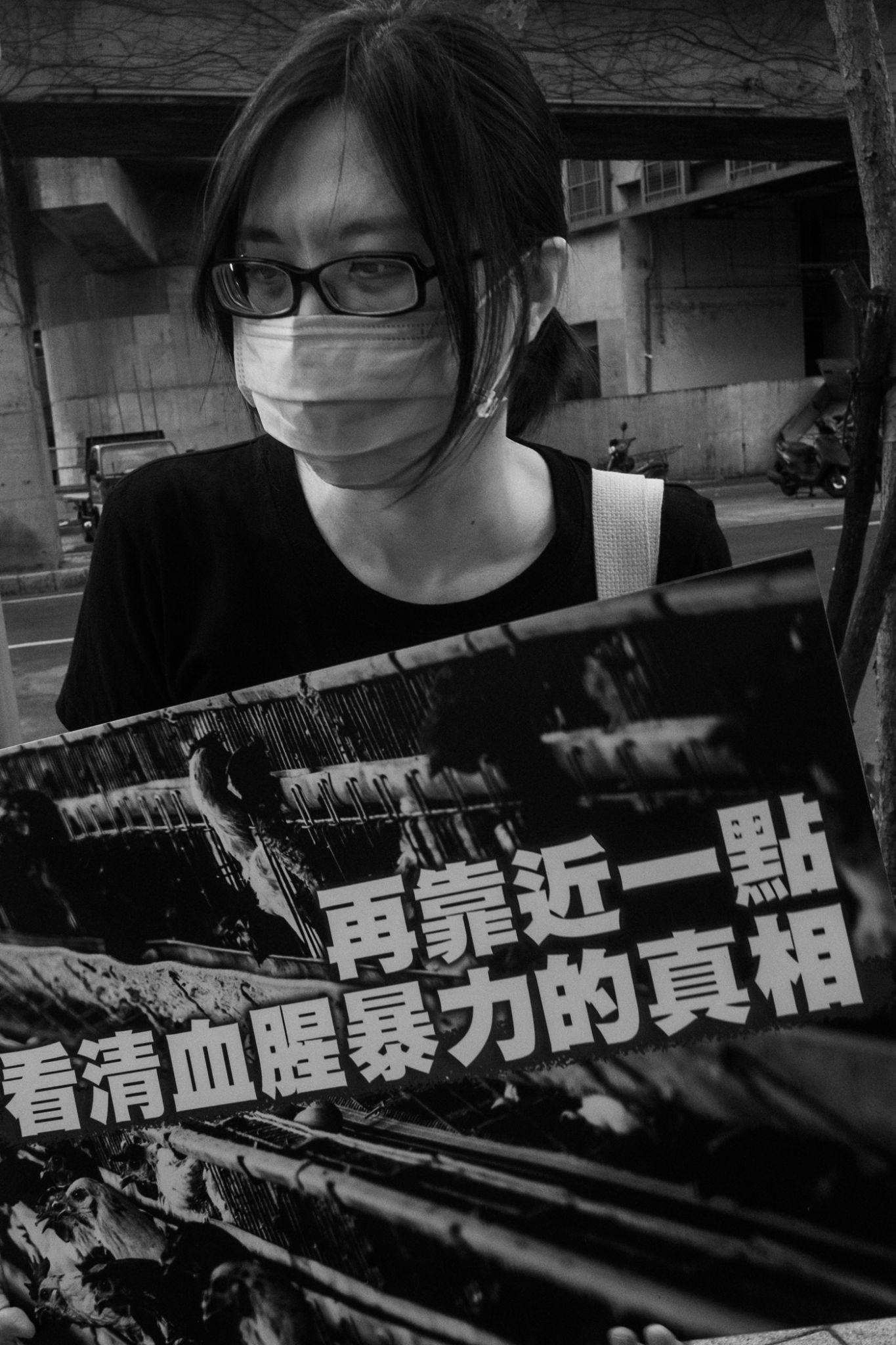 Lan in 2021. Photo credit: Enbion Micah Aan
Lan in 2021. Photo credit: Enbion Micah Aan
For Wang, a first-time attendee, participating in a Save vigil was a way to strengthen her resolve. For her, seeing images on social media is always a difficult experience, but she found witnessing slaughtering gave her the strength to walk down the market to see animal parts, and Save vigils could help her cope with her fears: “…If the heart be broken into powder and dissipate like ashes and smoke, then I will never fear anything, however cruel it may be.”
Jasmine in 2021 (left) and 2023 (right). Photo credit: Enbion Micah Aan
Jasmine, a high school student in 2021, went to Taipei from Kaohsiung to attend the Save Vigil because it was important to bear witness and see the animals in person after having gone vegan for more than a year. Bearing witness certainly had an emotional impact: “I was deeply shocked by this visit to the slaughterhouse, helplessly staring at the victims of the food system–hungry, thirsty, crammed in tiny cages, waiting to be slaughtered. Under the dim light of the slaughterhouse, in each cage stacked on top of each other, are beings that are sentient and capable of fear, creating an atmosphere of burden and depression.” Yet, it is not just negative emotions that Jasmine experienced that night, as it also strengthened her resolve: “These helpless and flinching chickens are the very reason for action and motivation to persist, making me stronger, taking on firmer steps on the road of veganism. Though standing by the dark slaughterhouse, every activist’s ideal and determination were cemented. Now I understand that feelings of extreme sadness and great hope can co-exist.”
In 2023, I met Jasmine again at a vigil, now a college student. She certainly has kept up with her wishes to continue with animal activism, having organized a vegan market in Taipei with the Sustainability Club at NCCU.


